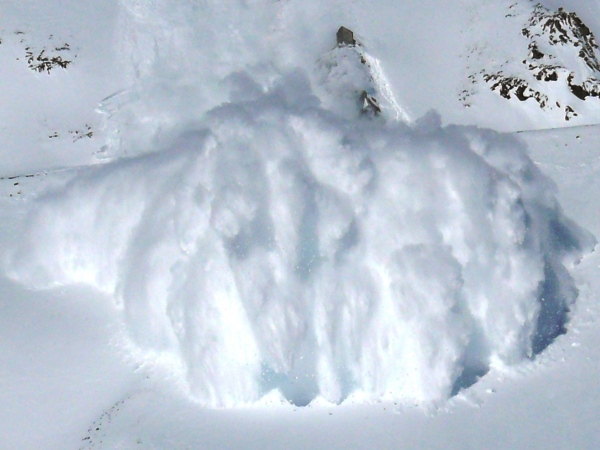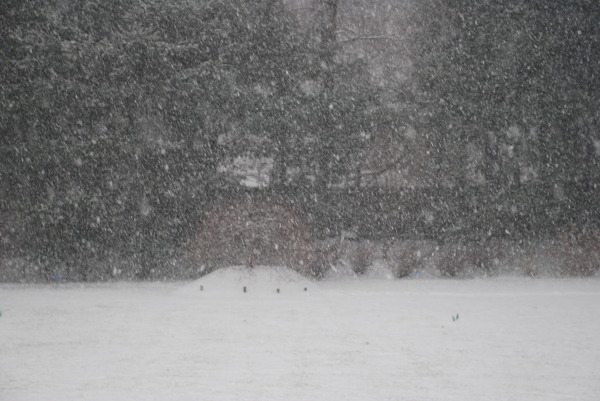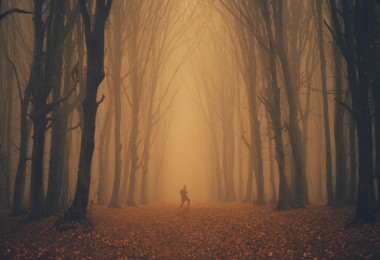Snowshoeing is less expensive than skiing and can be a marvelous way to explore the outdoors during the winter. However, one needs to be prepared to deal with the dangers that can occur in the snow. There are three major dangers that can occur to snowshoeing enthusiasts – sudden storms, avalanches, and injury. By being prepared and knowing how to deal with these situations, you will be better able to survive these situations if they occur. We recommend the following snowshoeing survival tips to ensure you are prepared prior to and during an emergency situation.
1. Inform Others
Since winter conditions can be dangerous, inform a friend of the route you are taking. By informing others, it will help searchers locate you more easily if there is a sudden storm or avalanche. You also want to do this so that if you do not return when you are supposed to, rescue folks know in what direction to look. The app, Hiker Alert, can send a text message to family and friends if you don’t return by your scheduled time.
2. Wear Bright Clothes
Another precaution that you can take is to wear bright-colored clothes. If you do find yourself lost or in a survival situation, bright clothes are easier to spot against the white backdrop of the snow. Choosing to wear clothes in colors that are normally not found in nature (such as orange) will make you easily identifiable.
3. Select a Campsite With Care
Always select your campsite with care. A proper campsite makes a large difference if you need to take shelter from a storm, your way back has been blocked by an avalanche, or if you are lost. For example, the top of a cliff or a hill will expose you to the wind and chill faster, while a hollow area will accumulate cold air.
Instead, try to select level ground that is protected by a natural windbreak. Also, make sure the area does not pose a risk of succumbing to an avalanche or of being defeated by one.
4. Melt Snow to Stay Hydrated In A Survival Situation
Even if you are feeling cold, you need to stay hydrated by drinking water. One survival tip when snowshoeing is to never eat any snow since this can rapidly lower body temperature. Instead, melt the snow and then drink the water.
5. Make A Snow Cave
If you are caught in a snowstorm without a tent, build a snow cave since snow is an excellent insulator. This will keep you warm and protected from the wind.
You can line the base of the cave with pine boughs and sleep with your backpack close to your core. This will help add to the insulation.
Whether you are sleeping in a tent or snow cave, you should keep your water bottle and food close to your body. Keeping them close will make sure that the water and food do not freeze, which will help you stay hydrated. As soon as you wake up, you can eat something quickly if you feel very cold in the night.
6. Brush Off Snow from Clothes
Once it starts snowing, make sure to brush off the snow from your clothes at regular intervals. Keeping the snow off will help reduce the weight on your body. Also, it will ensure that melting snow and water do not penetrate your clothes and chill you further.
You should also make it a point to brush off snow from your clothes and shoes before entering your tent or snow cave at night. It’s important to keep the interior dry even as your body heat warms the place.
7. Change Wet Clothes Immediately
If your clothes have become wet, you need to change them as soon as possible. Changing wet clothes is an especially important snowshoe survival tip. You’ll want to pay special attention to wet socks, gloves, and mittens. Your extremities tend to get cold the fastest and are also the most prone to frostbite and hypothermia.
8. Make An Effort To Stay Warm
It can be difficult to stay warm when out in the snow. However, you can retain your body warmth for a longer period of time by covering your head, wearing mittens instead of gloves, and dressing in layers.
When you walk, your body produces more heat, so you can remove a few layers, but you need to add layers as soon as you stop. Do not remove your warm clothing when you sleep since your body will need the additional warmth provided.
9. Signal for Help
Once the storm blows out or it is daylight, start signaling for help. You can use a mirror to flash sunlight thrice since this is the universal signal for help. You can also light three fires in a triangle if you find sufficient wood.
10. Use A Splint If Injured In A Survival Situation
If you are injured while snowshoeing, you need to immediately apply first aid. Broken arms or legs should be placed in a splint. You should also stem the flow of blood from any cuts by bandaging the wound or applying a tourniquet.
11. Use The Trees
Whether you are injured or lost while snowshoeing, it is best to stay as close to the trail as possible. However, if you are unaware of the location of the trail, stay close to a tree and use its height to signal for help.
12. Make A Wood Fire
It is not difficult to light a wood fire on the snow. Instead, you need to suspend the wood from a tree branch or a similar projection. Use anything elevated to hoist the wood. Then suspend the wood with wire and light it if you cannot find any dry or covered/sheltered ground.
Have any survival tips that you’d like to share? Join the conversation and use the comment section below.









In order to start a fire you would need waterproof strike anywhere matches plus some starter material. Dryer lint is good. I saw somewhere (I think it was in the Back Woodsman magazine) a few days ago where someone tied bundles of about a dozen strike anywhere matches together and then coated them with paraffin wax.